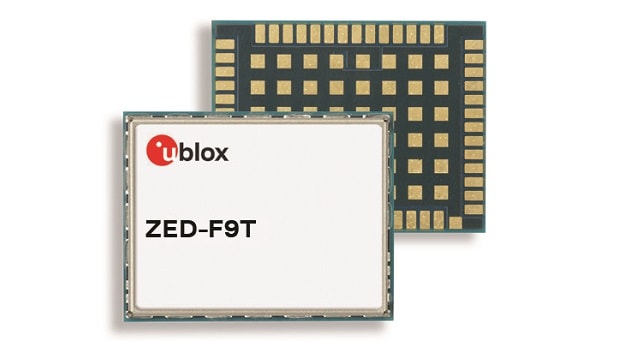u-blox has announced the ZED-F9T high accuracy timing module. This module meets even the most stringent timing synchronization requirements in 5G mobile networks on a global scale.
Although previous generation of cellular networks have already been using GNSS time as primary source of synchronization, better synchronization throughout the network will be a key enabler for 5G. The 5G cellular network will require tighter coordination to offer much greater bandwidth and a broader range of services to the user than 4G, supporting sophisticated features such as beam-forming, carrier aggregation, and massive MIMO.
“The ZED-F9T’s nanosecond-level timing accuracy meets the most stringent requirements for 5G networks on a global scale. By significantly reducing the time error of the primary source of cellular network synchronization, the ZED-F9T will help operators maximize the performance of their networks and so optimize the return on their investment in 5G,” says Samuli Pietila, Principal Product Management, Product Center Positioning at u‑blox.
The timing module’s multi-band capability allows it to compensate the ionosphere error from all GNSS satellite constellations and reduce the timing error under clear skies to less than five nanoseconds without the need for an external GNSS correction service. To further improve accuracy locally, the ZED-F9T features differential timing modes that exchange correction data with other neighboring GNSS timing receivers via a communication network.
“The ZED-F9T aims also to address concerns regarding the integrity and resilience of GNSS-based timing synchronization solutions for critical infrastructure applications,” Pietila adds. “The ZED-F9T will give network operators the capabilities to achieve unmatched immunity against spoofing and jamming attacks by combining concurrent reception of four GNSS satellite constellations with multi-band signal reception,” he adds, referring to the module’s ability to concurrently receive multi-band signals from America’s GPS, Europe’s Galileo, Russia’s GLONASS, and China’s Beidou satellites.
Access to all four satellite constellations strengthens the receiver’s global coverage and increases timing availability in challenging signal environments, ultimately delivering more reliable performance. ZED-F9T also includes advanced security features such as secure boot, secure interfaces, and Time-Receiver Autonomous Integrity Monitoring (T-RAIM) to provide highest level timing integrity.
Additionally, the ZED-F9T’s support for all four GNSS constellations enables developers to design single products to serve global markets, simplifying OEMs’ product lines. The module has a single RF input for all the GNSS bands, which simplifies antenna selection. An on-board diplexer, followed by dual SAW filters, provides exceptional signal selectivity and out-of-band attenuation. Offered in a 54-pin land grid array package of just 17.0 x 22.0 x 2.4mm, it is designed for easy integration.
Engineering samples will be available in February 2019.

